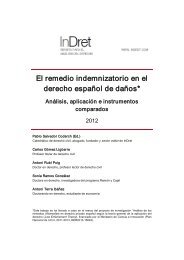MPF WHITE PAPER - AW 2014 Law Firms in Transition - 10-21-14
MPF WHITE PAPER - AW 2014 Law Firms in Transition - 10-21-14
MPF WHITE PAPER - AW 2014 Law Firms in Transition - 10-21-14
Create successful ePaper yourself
Turn your PDF publications into a flip-book with our unique Google optimized e-Paper software.
<strong>20<strong>14</strong></strong> L<strong>AW</strong> FIRMS IN TRANSITIONpercent are tra<strong>in</strong><strong>in</strong>g their lawyers to talk with clients about pric<strong>in</strong>g, and 45% areidentify<strong>in</strong>g each of their client’s unique pric<strong>in</strong>g preferences. Each of these should bea relatively simple undertak<strong>in</strong>g for law firms and should be universally embraced.Practice EfficiencyEach year s<strong>in</strong>ce 2011 when we first asked the question, more than 90% of firmleaders have said they believe there is a permanent market shift requir<strong>in</strong>g greaterefficiency <strong>in</strong> the delivery of legal services. But when asked about specific changestheir firms are mak<strong>in</strong>g to <strong>in</strong>crease efficiency, the numbers don’t reflect the samelevel of seriousness.The top two tactics to <strong>in</strong>crease efficiency <strong>in</strong> <strong>20<strong>14</strong></strong>, each undertaken by about 60% ofall firms surveyed, were us<strong>in</strong>g technology tools to replace human resources, andknowledge management. Project management tra<strong>in</strong><strong>in</strong>g was offered <strong>in</strong> 43% of firms.Some firms employed basic labor arbitrage, trad<strong>in</strong>g higher priced human resourcesfor lower priced resources. Forty-six percent of firms report shift<strong>in</strong>g work to contractor temporary lawyers; and 41% of firms shifted work from lawyers toparaprofessionals.Only 30% of law firms have taken on the really challeng<strong>in</strong>g task of re-eng<strong>in</strong>eer<strong>in</strong>gwork processes.<strong>Law</strong>yer Staff<strong>in</strong>gWhen asked if growth <strong>in</strong> lawyer headcount was a requirement for cont<strong>in</strong>uedsuccess, just 49% of firm leaders said yes, down 6% from 2013.Numbers for net change <strong>in</strong> 2013 lawyer headcount seem to support this f<strong>in</strong>d<strong>in</strong>g forthe most part. Median responses from all survey participants showed a 2% <strong>in</strong>crease<strong>in</strong> non-equity partners, a 1% <strong>in</strong>crease <strong>in</strong> partner-track associates, and no net changefor equity partners, non-partner track associates and other full-time lawyers.Firm leaders are most conflicted about their non-equity partnership tier. Despite thefact that this lawyer category led headcount growth <strong>in</strong> 2013, 46% of respondentssaid they believe they have too many non-equity partners. Additionally the surveyAn Altman Weil Flash Survey iii



